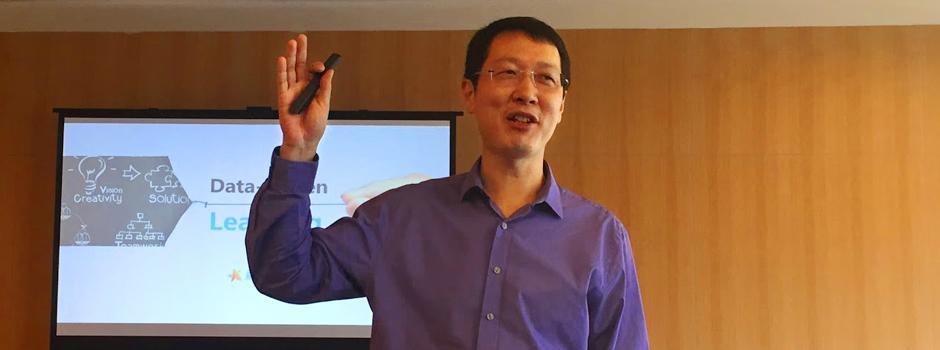Big data is not for geeks only; it affects us all. In fact, it has been described as the “coolest field of the 21st century.” Will the convergence of big data and digital media, along with the increasing use of the Internet, set off a new trend in ESL learning? Dr. Pan Pengkai, an expert in children’s language education, said yes in his talk at NYU Shanghai on April 28.
“A lot of English teachers in China don’t speak English at all, they simply play audio cassettes,” Pan recalled. “Sadly, there is little language practice or teamwork involved in class.”
Upon receiving his doctorate from the MIT Media Lab, Pan was determined to start an English education reform initiative in China to replace the traditional test-oriented teaching with an interactive teaching-learning method. Luckily, with the help of digital pioneer Professor Nicholas Negroponte, Pan was able to set up his very first e-learning company ‘Alo7’ (formerly known as ‘Saybot’) in 2004, bringing him many steps closer to realizing his ambition.
According to Pan, with the use of data-driven learning products such as Alo7, thousands of corpora will be created to facilitate a child’s language learning. Moreover, access to longitudinal data about a learner’s behavior will give teachers a 360-degree view of each student’s performance at the push of a button, allowing them to better understand what language skills are truly acquired over time, and what needs more attention. Mobile devices such as iPads and smartphones can also be used to assess a child’s learning outcomes.
“This not only makes learning English more fun, but also allows teachers and parents to compare a child’s data with that of his peers in real time,” Pan said.
As a true revolutionary of the way English is learned and taught in China, Alo7 has now turned into a leading provider of Children’s digital ESL books with more than 50 million registered users worldwide.
(Text by: Lucy Xu)


